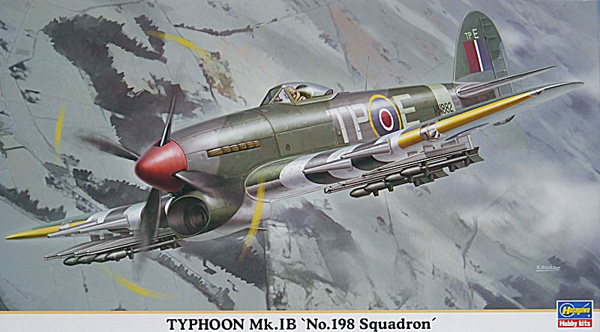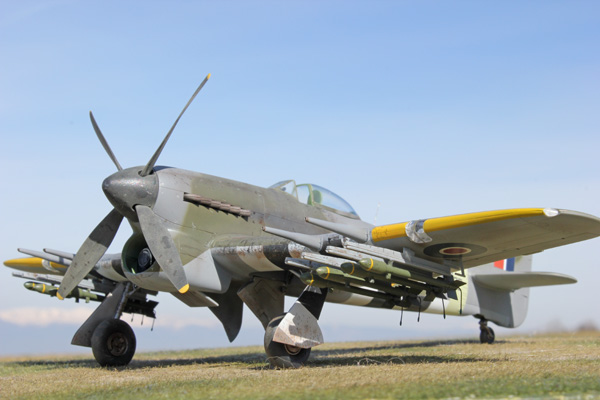
Feature Article by Franck Oudin
A little bit of background on the Hawker Typhoon
The Hawker Typhoon (“Tiffy” in RAF slang), was a British single-seat fighter-bomber, produced by Hawker Aircraft. It was intended to be a medium–high altitude interceptor, as a replacement for the Hawker Hurricane but several design problems were encountered and it never completely satisfied this requirement.
The Typhoon was originally designed to mount twelve .303 inch (7.7 mm) Browning machine guns and be powered by the latest 2000 hp engines. Its service introduction in mid-1941 was plagued with problems and for several months the aircraft faced a doubtful future. When the Luftwaffe brought the formidable Focke-Wulf Fw 190 into service in 1941, the Typhoon was the only RAF fighter capable of catching it at low altitudes; as a result it secured a new role as a low-altitude interceptor.
Through the support of pilots such as Roland Beamont it became established in roles such as night-time intruder and long-range fighter. From late 1942 the Typhoon was equipped with bombs and from late 1943 RP-3 ground attack rockets were added to its armoury. With those weapons and its four 20mm Hispano cannon, the Typhoon became one of the Second World War’s most successful ground-attack aircraft.

The Hasegawa model
The Hasegawa model is not new on the market but is the best option in that scale, released nearly 10 years ago, with crisp details and engraved panel lines, the level of details is optimum, but some after market companies have done their homework, and released some superb details sets for this model. Amongst these is Ultracast from Canada, and MDC in the UK.
To update the model I will use a selection of resin parts such as:
• the 4-blade propeller
• wheels
• the pilot seat
• exhausts
• air intake filter, and finally
• a set of rockets with explosive heads.
My completed model…
Here’s a photo of my completed model – hope you like it!
